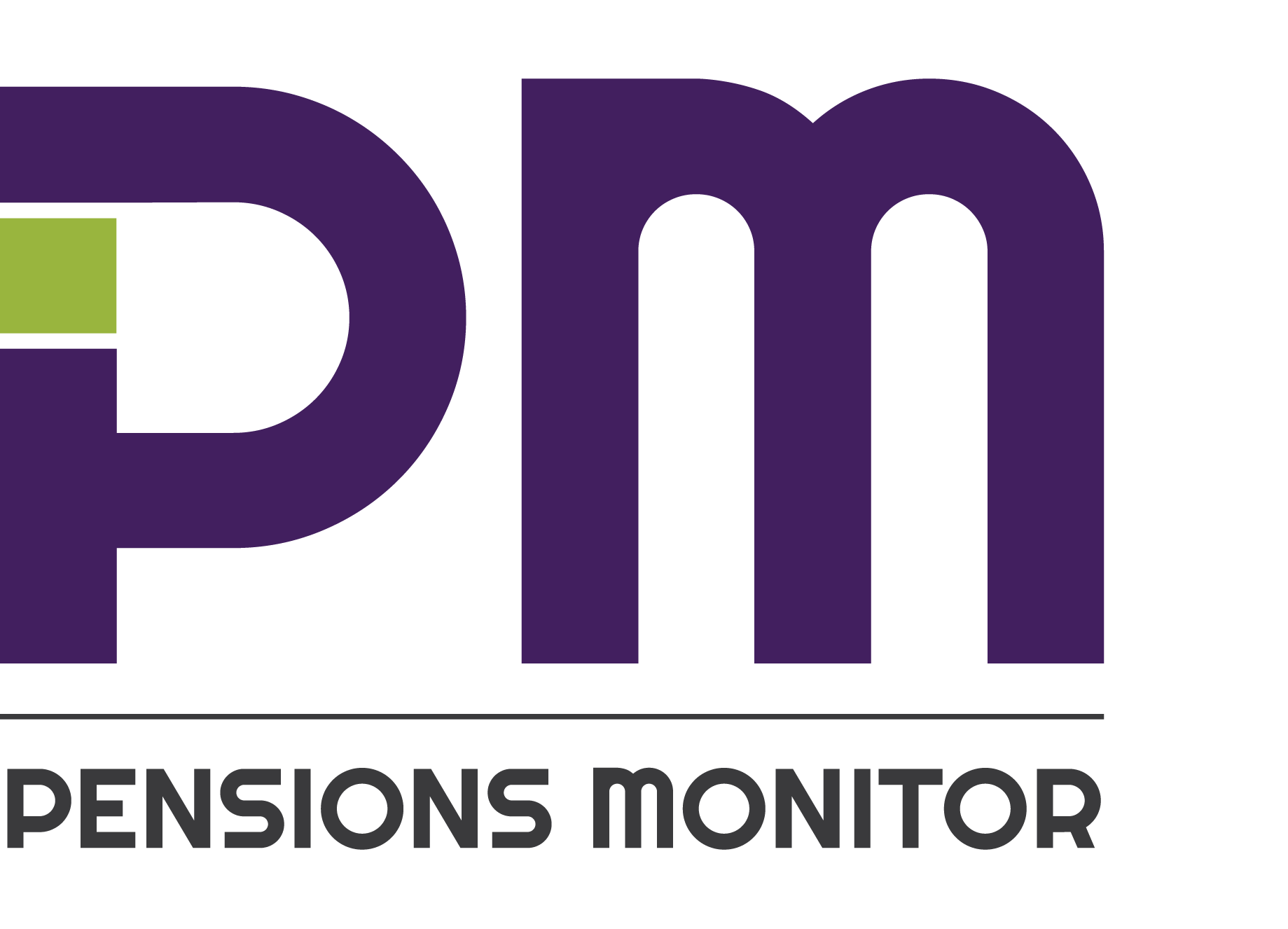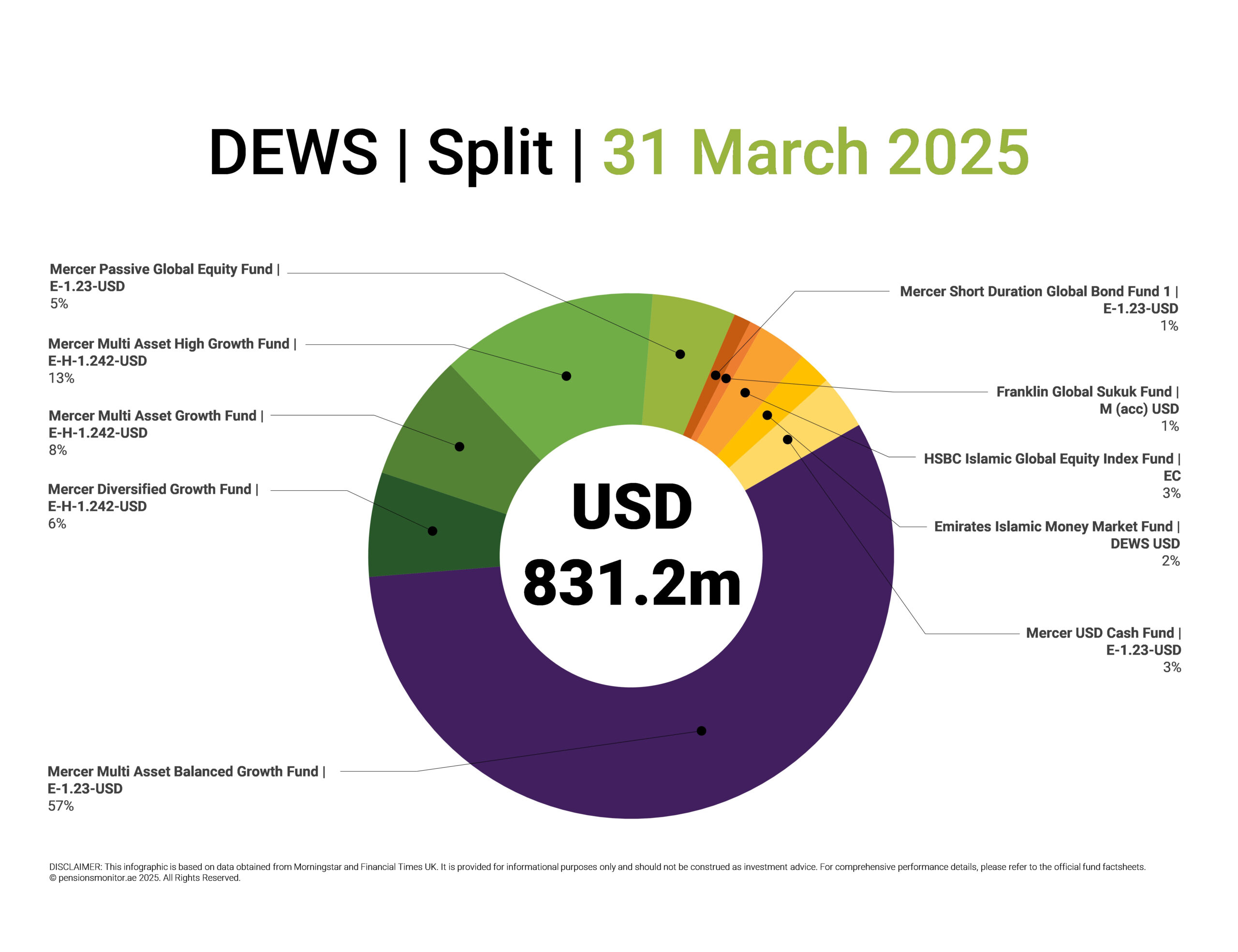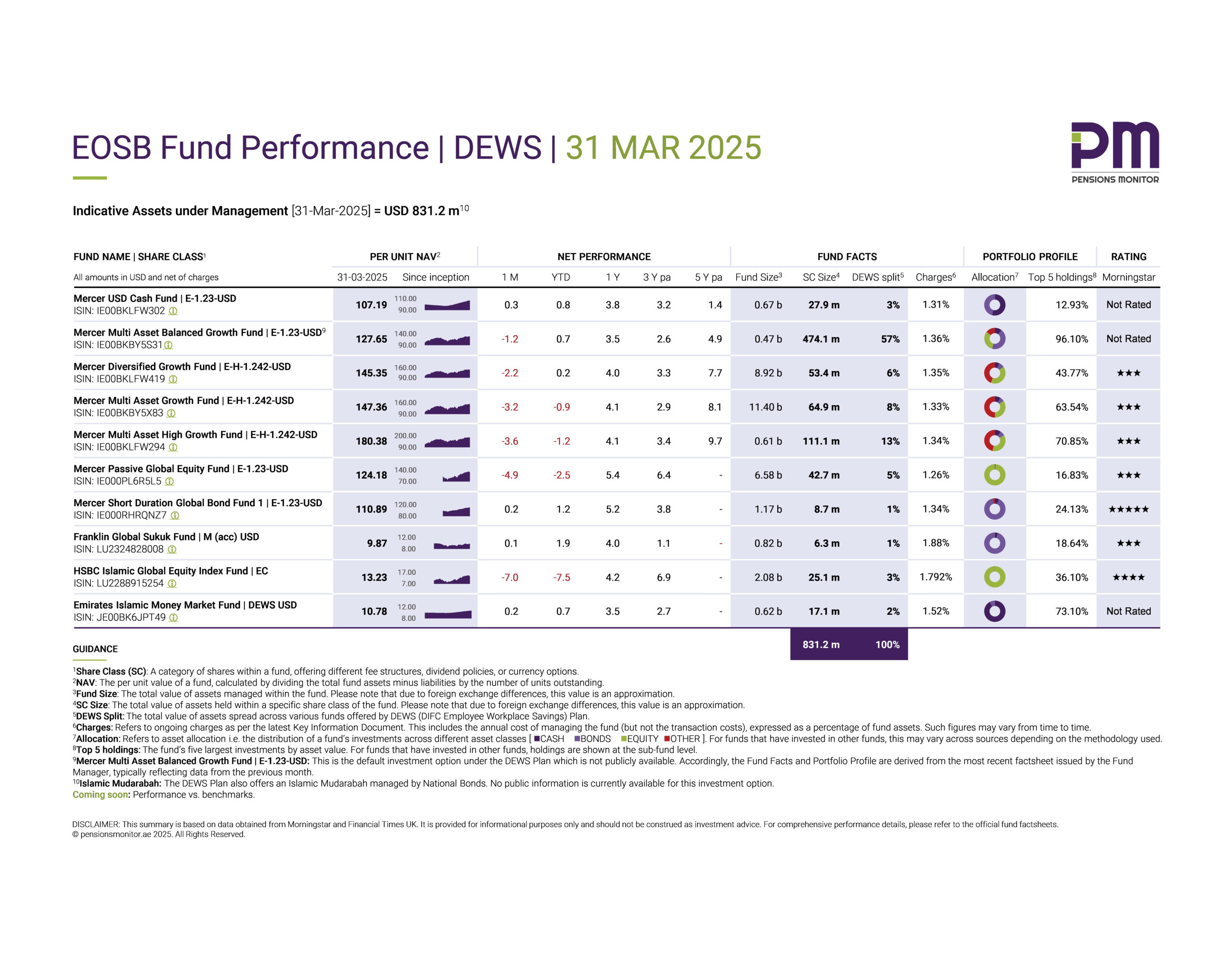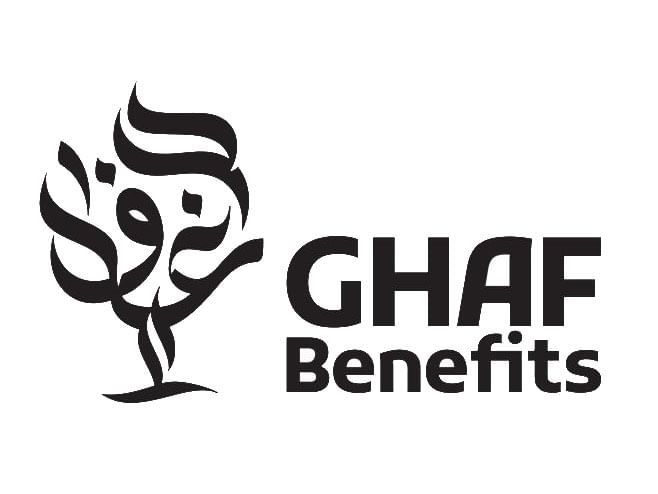
Mercer, the global consulting firm specializing in employee benefits and investment solutions, recently released the 16th edition of the Global Pensions Index Report 2024 (the ‘Report’) in collaboration with the CFA Institute. The Report highlights that many countries are facing challenges related to aging populations, characterized by increasing life expectancies and declining fertility rates leading to a historic record where people aged 65 and over now outnumber children aged five or younger.
In the UAE as well, the number of expatriate retirees is expected to rise as the government has implemented various initiatives to promote long-term residency, including the introduction of retirement visas.
As a result, pension systems must become a priority for governments, especially given the rising inflation, increased living costs, and higher interest rates that threaten the well-being of current and future pensioners.
To address these issues, the Report compares the pension systems of 48 countries, representing 65% of the world’s population, using a proprietary ranking system (noting that not all pension systems are directly comparable) and offers recommendations for improvement.
Overview of the Mercer CFA Institute Global Pension Index
For background, the Mercer CFA Institute Global Pension Index is an overall index value for each pension system representing the weighted average of three sub-indices: 40% for adequacy, 35% for sustainability, and 25% for integrity, measured against more than 50 indicators, a few of which are presented in the image below.

Results are presented on a five-point scale in the form of alphabets ranging from A (first-class systems) to E (poor systems in early stages of development or nonexistent), sometimes augmented with a plus or minus sign. It is worth noting that the weightage of the three sub-indices have remained consistent since the index was first published in 2009.
Ranking results: 2024
The Report reiterates that there is great diversity between pensions systems around the world, with the Index scores ranging from 44.0 for India to 84.8 for the Netherlands in top position for a second consecutive year.
|
Grade |
Index Value |
Systems |
2024 |
2023 |
Description |
|
A |
>80 |
Netherlands Iceland Denmark Israel |
84.8 83.4 81.6 80.2 |
85.0 84.8 81.3 80.8 |
A first-class and robust retirement income system that delivers good benefits, is sustainable, and has a high level of integrity. |
|
B+ |
75–80 |
Singapore Australia Finland Norway |
78.7 76.7 75.9 75.2 |
76.3 77.3 76.6 74.4 |
A system that has a sound structure, with many good features but has some areas for improvement that differentiate it from an A-grade system. |
|
B |
65–75 |
Chile Sweden UK Switzerland Uruguay New Zealand Belgium Mexico Canada Ireland France Germany Croatia Portugal |
74.9 74.3 71.6 71.5 68.9 68.7 68.6 68.5 68.4 68.1 68.0 67.3 68.2 66.9 |
69.9 74.0 73.0 72.0 68.9 68.3 68.6 55.1 70.2 70.2 62.0 66.8 62.3 67.4 |
A system that has a range of good features but also has notable risks and/or shortcomings that should be addressed. |
|
C+ |
60–65 |
UAE Khazakhstan Hong Kong SAR Spain Colombia Saudi Arabia USA |
64.8 64.0 63.9 63.3 63.0 60.5 60.4 |
62.5 64.9 64.0 61.6 61.9 59.5 63.0 |
A system with some good features but major risks and/or shortcomings; without improvements, its efficacy and long-term sustainability can be questioned. |
|
C |
50–60 |
Poland China* Malaysia Brazil Botswana Italy Japan Peru Vietnam Taiwan Austria Korea (South) Indonesia Thailand |
56.8 56.5 56.3 55.8 55.4 55.4 54.9 54.7 54.5 53.7 53.4 52.2 50.2 50.0 |
57.6 55.3 56.0 55.7 54.5 56.3 56.3 55.5 NA 53.6 52.5 51.2 51.8 46.4 |
A system that has some desirable features but also significant weaknesses and/or omissions that need to be addressed for efficacy and sustainability. |
|
D |
35–50 |
South Africa Turkiye Philippines India |
49.6 48.3 45.8 44.0 |
54.0 46.3 45.2 45.9 |
A system with some desirable features but major weaknesses that need addressing; without improvements, its efficacy and sustainability are in doubt. |
|
E |
<35 |
Nil |
|
|
A poor system that may be in the early stages of development or nonexistent. |
United Arab Emirates
The United Arab Emirates (UAE) was first included in the 13th edition of the report with an index value of 59.6 in 2021 which improved to 64.8 (C+) in 2024 grouped alongside Kazakhstan, Hong Kong SAR, Spain, Columbia, Saudi Arabia and USA.
The 2024 index categorizes UAE as B+ (77.1) for adequacy, D (43.3) for sustainability, and B+ (75.3) for integrity, placing it in 23rd place out of the 48 participating countries.
It is important to note that the UAE index is based on the pension system for UAE nationals (given that there is no retirement income scheme in place for expatriate residents). The scheme requires UAE nationals to contribute 5% of their salary, while their employers contribute between 12.5% and 15% of the salary, with benefits guaranteed by the government. The improvement in the UAE index is largely (by 2.3 points) attributed to the introduction of a minimum access age to receive benefits, ensuring that pension plan benefits are preserved for retirement.
What reforms could potentially boost UAE’s index score?
The report indicates that A-Grade Pension Systems – such as those in the Netherlands, Iceland, Denmark and Israel – with an index score of 80 and above, typically have private pension coverage of at least 80% of the working-age population and pension assets equal to at least 100% of GDP. Additionally, these systems feature pension contributions of at least 12% of wages.
For the UAE to achieve similar targets, it will need to ensure that expatriate workers, who comprise about 90% of the country’s population, are included in a workplace pension scheme. While the new End-of-Service Benefits Savings scheme (EOSB scheme) is expected to become compulsory (see our previous article), it raises the question: does this EOSB scheme qualify as a pension system?
Pensions Monitor has consulted Mercer, who has explained that a pension system – regardless of its design – should aim to provide financial security in retirement by distributing an individual’s lifetime earned income over their entire life, rather than consuming it all during their working years.
According to the OECD, a pension system may include one or more of the following components:
1. A public pension scheme, typically designed for the aged poor.
2. A mandatory earnings-related scheme, provided by either the government, the private sector, or both.
3. A voluntary earnings-related scheme, provided by employers or chosen by individuals.
In this context, the EOSB scheme closely aligns with some criteria of a pension system, particularly as a mandatory earnings-related scheme that also allows for voluntary contributions. However, there are several changes required to qualify as a true pension scheme:
Limit withdrawals: The EOSB scheme allows for leakage from the savings system on every change of employment and therefore is not aimed at providing financial security in retirement. Presumably, the intention was to build sufficient flexibility into the EOSB scheme, however, given that the UAE is now encouraging long term residency, it may be worth limiting withdrawals of funds to specific circumstances, at least for those residents with long term visas, to encourage long term savings.
Align contribution rates: The contribution rates for the EOSB contribution rates are relatively lower compared to the benchmark of 12% of wages. Currently, the rates are set at 5.83% of basic salary per month for each of the first five years of service, increasing to 8.33% for subsequent years. Gradually increasing these contribution rates to align with the 12% benchmark would strengthen the system’s sustainability and enhance the benefits for retirees.
Include non-standard workers: It is also essential to integrate non-standard workers, such as self-employed individuals, into the system through automatic enrollment, as such groups may not save for the future voluntarily without some form of compulsion. Currently, the EOSB scheme is optional for self-employed persons, many of whom have long-term residency in the UAE.
Extend retirement age: Promoting higher labor force participation among older adults could extend the income-generating period and increase retirement savings. Under UAE Labor Law, the official retirement age is currently set at 60 years for both men and women, although employees can choose to continue working beyond this age with mutual agreement from their employer.
As of 2022, 71% of residents aged 55-59 were employed, with this proportion declining to 55% for those aged 60-64 and just 24% for those aged 65 and older. Given the UAE’s efforts to encourage longer residency, officially extending the retirement age from 60 to 65 could be a beneficial strategy to enhance the income-generating phase and reduce reliance on EOSB savings.
Introduce incentives for voluntary contributions: Currently, there are limited incentives for employees to maintain their savings within the EOSB system or make voluntary contributions, especially since the UAE has no income tax. However, employers are incentivized to contribute beyond the regulatory minimum, as contributions are tax-deductible up to 15% of total remuneration (see our previous article). Enhancing these incentives so as to match voluntary employee contributions could encourage greater savings and strengthen the overall retirement system.
Other recommendations: Other areas include reducing household debt levels and improving communication with employees regarding the scheme. The latter, as we know, is work in progress.
Our view
Furthermore, Mercer’s approach focuses on evaluating retirement income systems that are actively operational so as to allow for a thorough assessment of the scheme’s functioning and the benefits provided. For the UAE, this suggests that there is still time to refine the EOSB scheme to make it more pension-like before making it compulsory (see our previous article).
The Report is available for download below.





